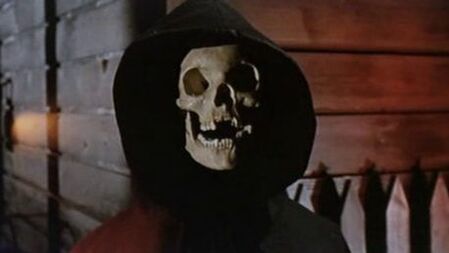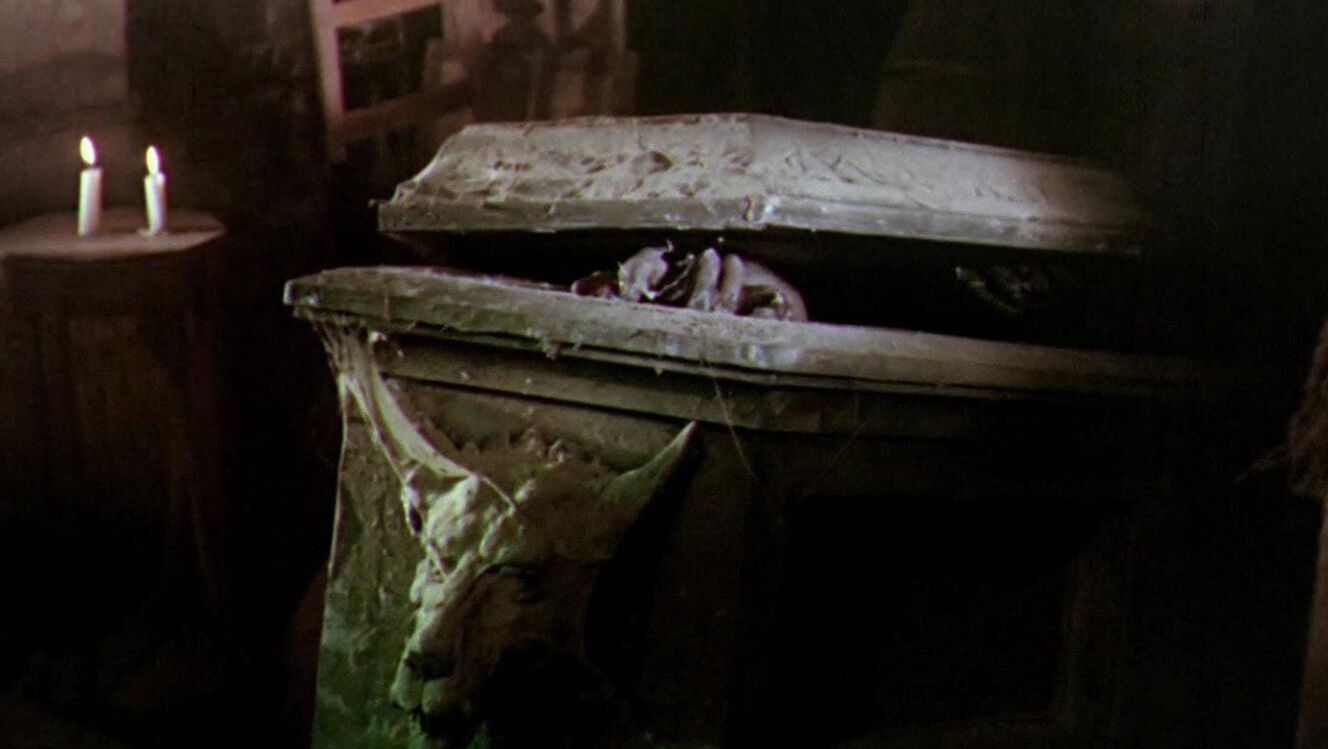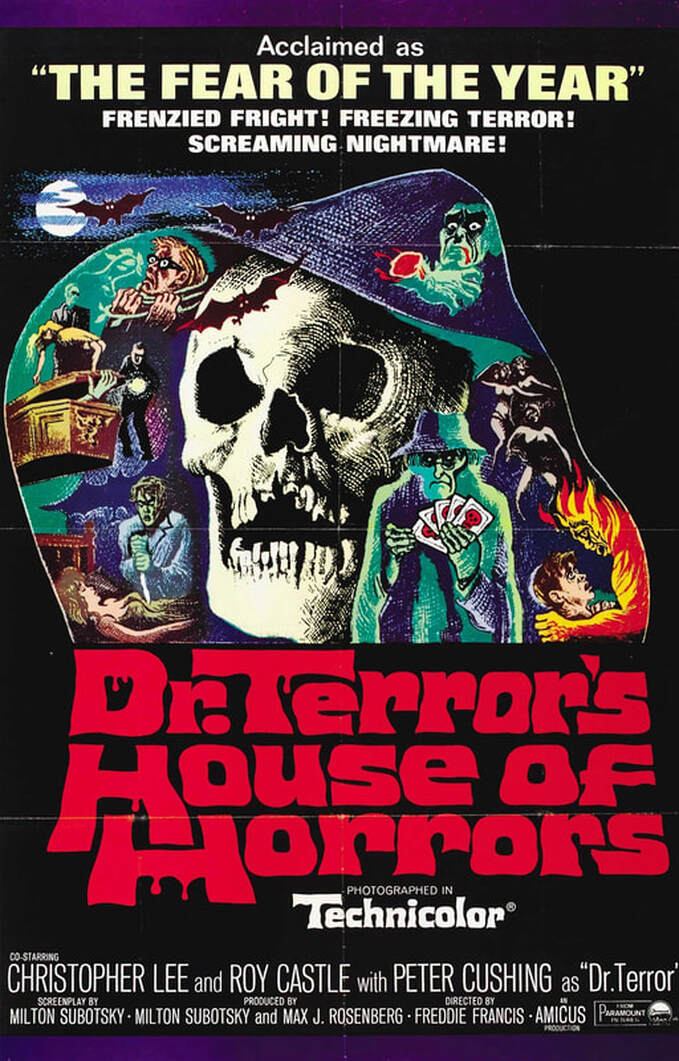 Welcome to a weekly series in which Doris V. Sutherland takes readers on a trip through the history of werewolf cinema... ...Dr Terror’s House of Horrors (1965) was the first in the cycle of portmanteau horror films from the British company Amicus, the idea of which was to multiply shocks by giving the audience a set of shorter tales—in this case, all directed by Freddie Francis and written by Milton Subotsky. The framing device stars Peter Cushing as the enigmatic Dr Schreck, a fortune teller who gives a tarot reading to his fellow passengers on board a train and predicts horrors in store for each and every one. The first of the film’s segments is the tale of a werewolf. Neil McCallum stars as an architect called over to conduct alterations in his own family home; in the process, he stumbles upon the coffin of a legendary lycanthrope named Cosmo Waldemar: “The werewolf! Over 200 years ago, Cosmo Waldemar claimed that this house was really his and that my ancestors stole it from him—but he vowed that one day he’d return.” “He swore that his place would be taken by whoever owned the house, and that he himself once again assumed human shape. His grave was never found—and here, in the walls of the cellar, for all this time…” Inside the coffin is a withered human corpse. But when nobody is looking, Waldemar rises in the form of a wolf (represented first by footprints, then by a large dog filmed in close-up) to carry out his business. The architect sets about preparing some silver bullets—but there is a twist in store for him, accompanied by another round of thick expositional dialogue. Waldemar makes for an unusual lycanthrope: his lupine motif aside, the portrayal of him as an undead creature that rises from a coffin lends the segment the feel of a vampire rather than werewolf story. Four more segments follow. The second sees a family troubled by a homicidal vine. In the third segment, a jazz musician (played by real-life musician Roy Castle) heads to an unspecified West Indian destination and incorporates music from a Voodoo ritual into his latest composition, incurring inhuman wrath. Christopher Lee and Michael Gough star in the tale of a rivalry between artist and art critic which turns fatal—and then supernatural—as the stuck-up critic is menaced by the artist’s severed hand. Finally, we get a segment starring Donald Sutherland as a newlywed groom who finds that his wife is a vampire. This last story makes for an interesting contrast with the werewolf segment: instead of a lycanthrope that acts like a coffin-dwelling vampire, we get a vampire that acts a little like a werewolf. The vampire bride is essentially portrayed as a werebat, being confined to bat-form for her nocturnal activities, and one sequence has Sutherland shoot the bat and later see his wife bleeding from the wound—a plot device right out of werewolf folklore. With only a few minor changes to the script, the vampire and werewolf characters in Dr Terror’s House of Horrors could easily have been switched. On the whole, the film turns out to be as silly as its title, although there’s plenty to enjoy if you approach it in the right spirit. Between the subtle-as-a-stake-through-the-heart scripts and the lurid colour lighting used in the sets, Dr Terror’s House of Horrors succeeds in capturing something of the atmosphere and iconography of pulp horror magazines and EC comics. Indeed, Amicus turned to each of these as direct source material with future anthologies: Tales from the Crypt (1972) and The Vault of Horror (1973) adapted EC horror comics, while Torture Garden (1967), The House that Dripped Blood (1971) and Asylum (1972) were based on the stories of prolific pulpster Robert Bloch. Any shortcomings in Dr Terror’s House of Horrors can be immediately forgiven after watching the worst of its imitations: Dr. Terror’s Gallery of Horror, an American knock-off from 1967. This too has a werewolf, although he turns up only after the viewers have sat through eighty-odd minutes of tedious scripts, flat direction and performances that will really make you appreciate what a solid cast Amicus pulled together for the original film. Gallery of Horror’s lycanthrope turns up in the final segment, an inept restaging of Dracula, which ends with the twist revelation that Jonathan Harker is a werewolf: he only wanted to kill the Count so that he can feed on Transylvanian peasants himself. By Doris V. Sutherland
0 Comments
Leave a Reply. |
Archives
March 2023
|


 RSS Feed
RSS Feed